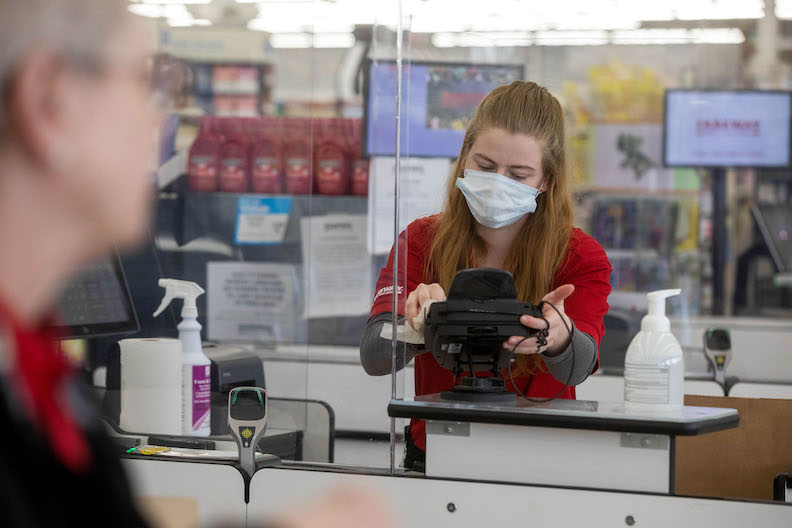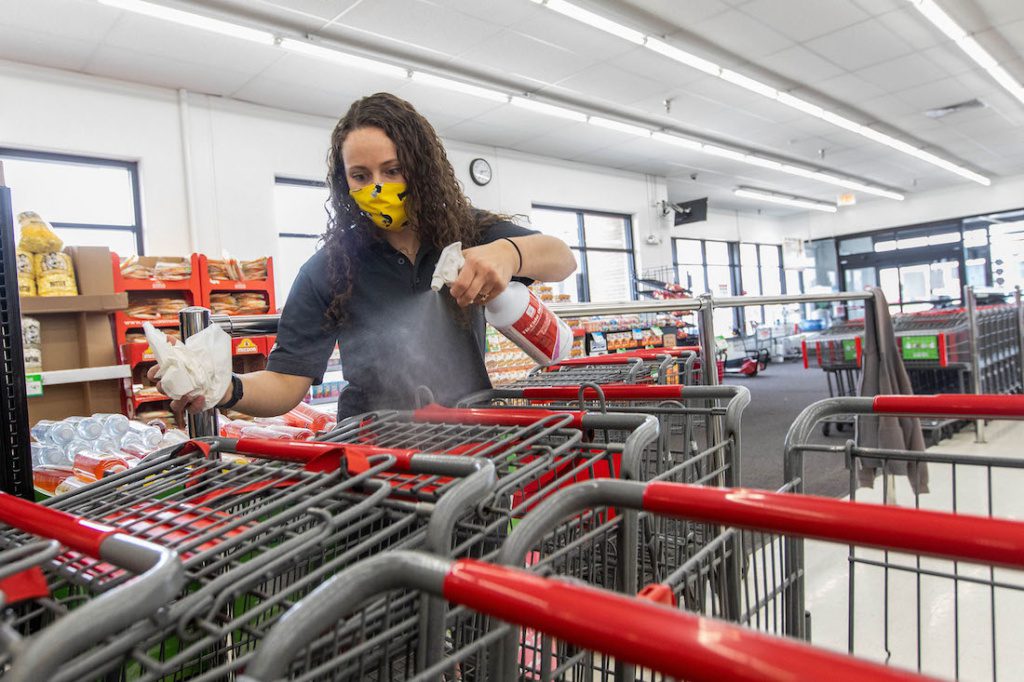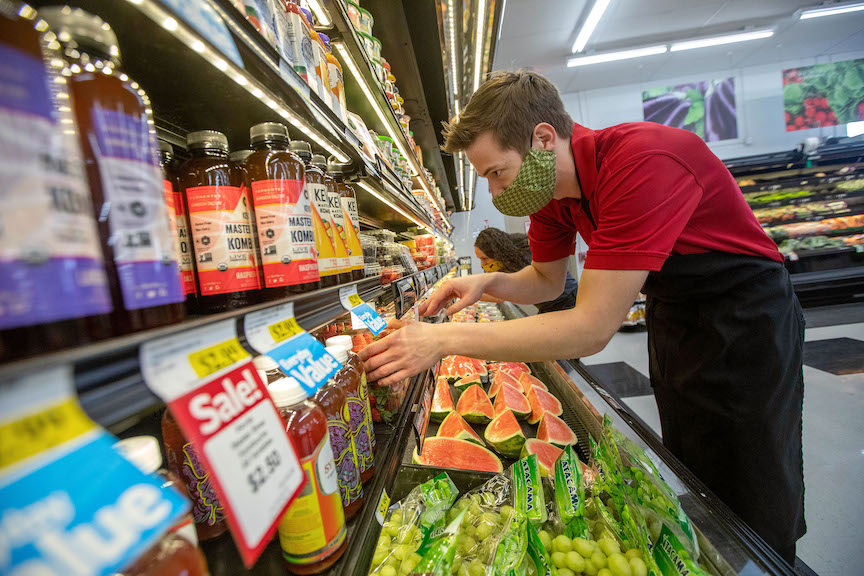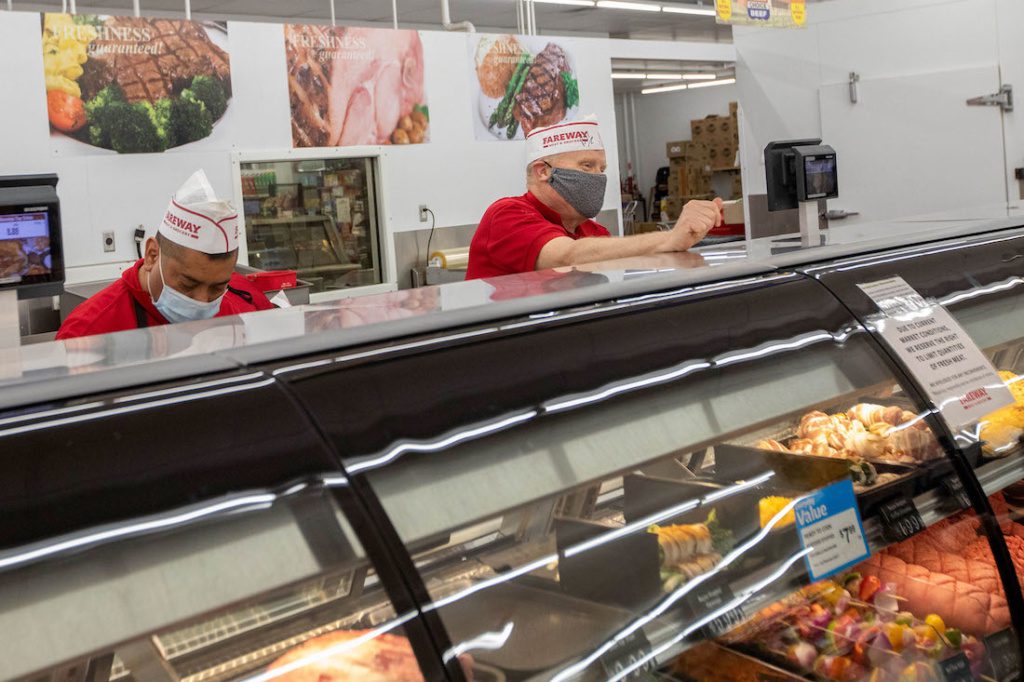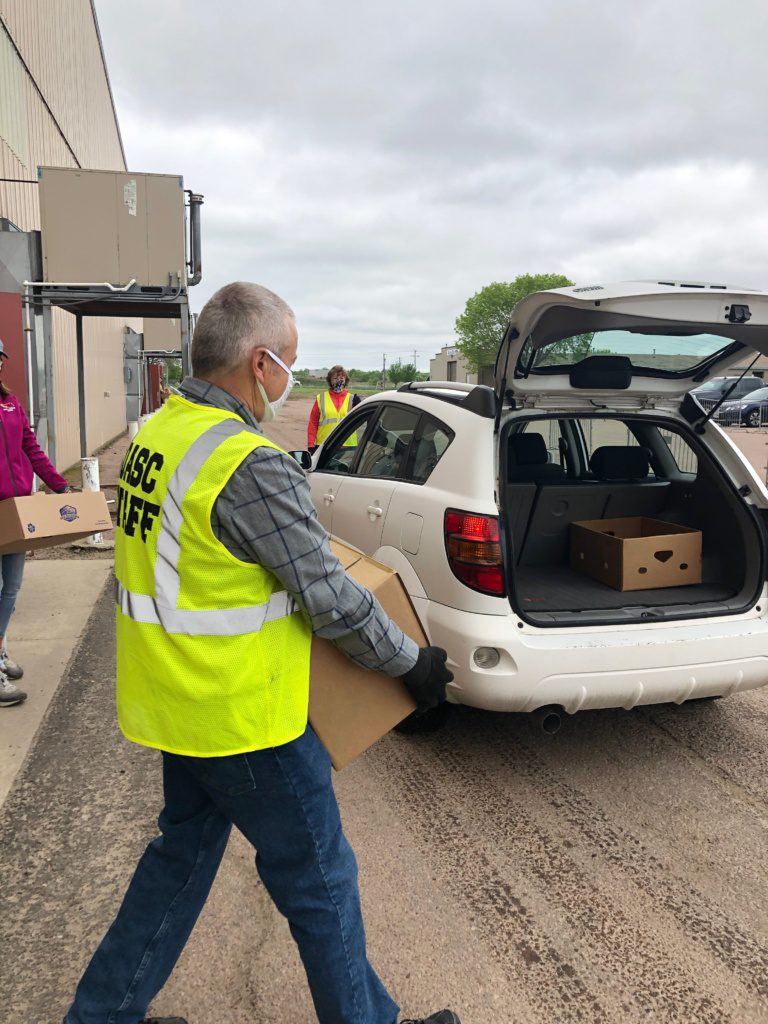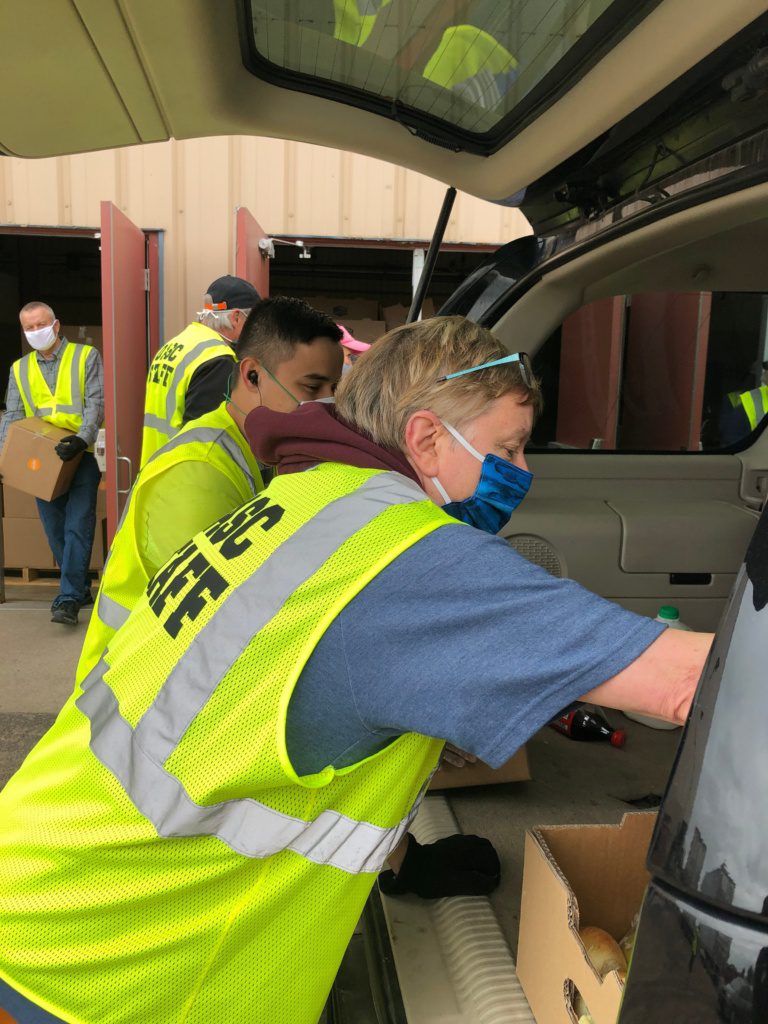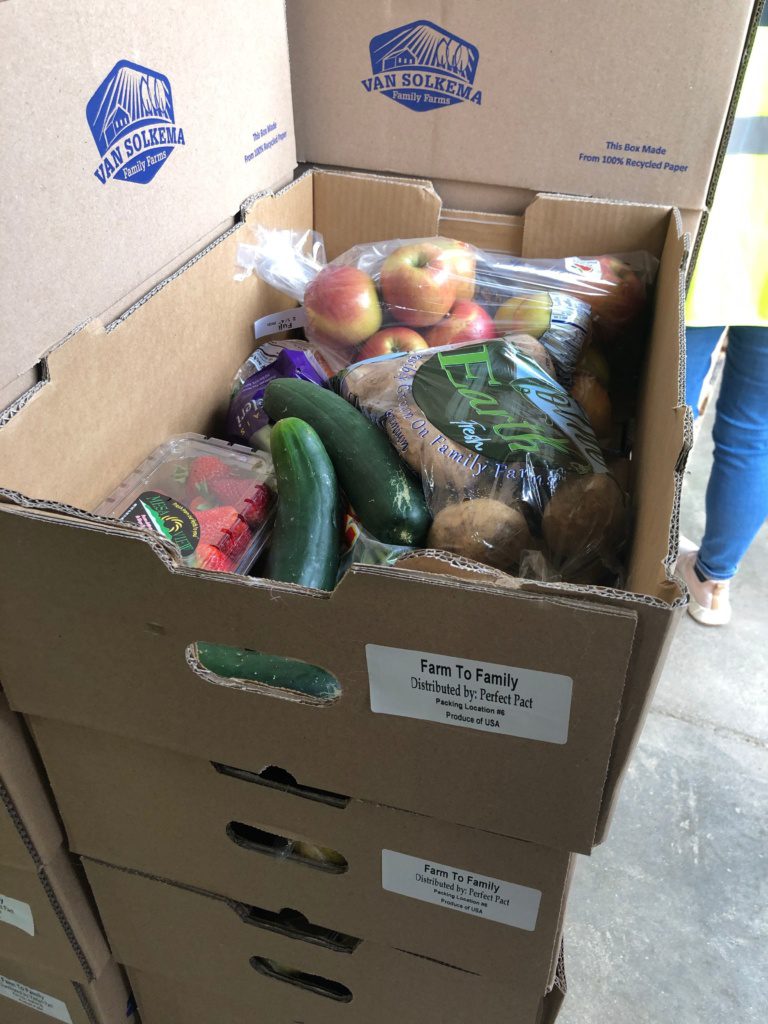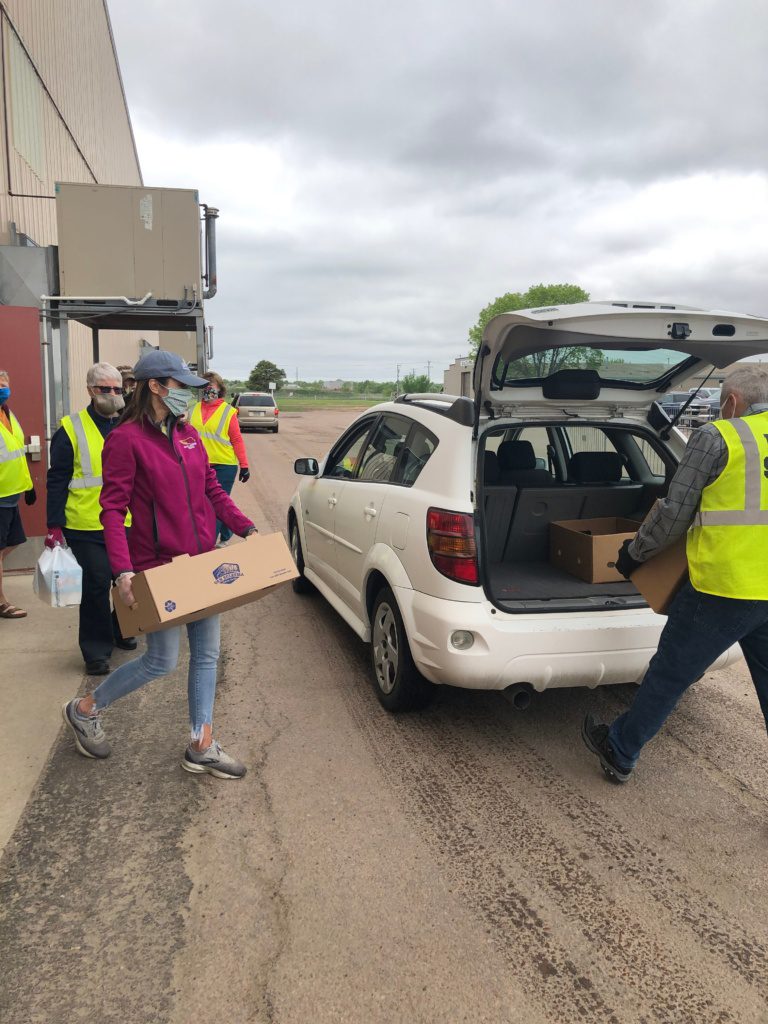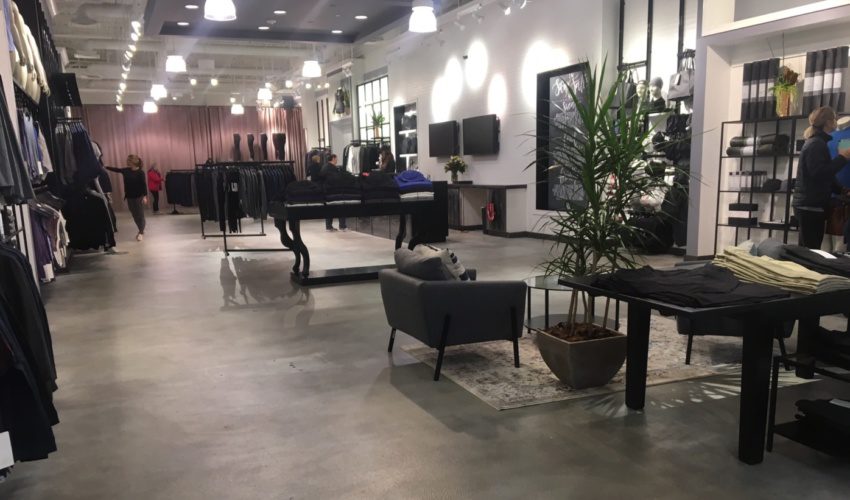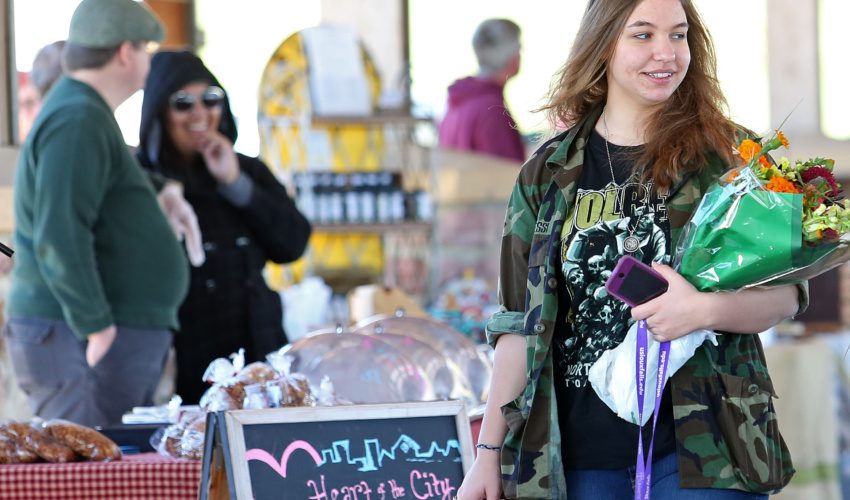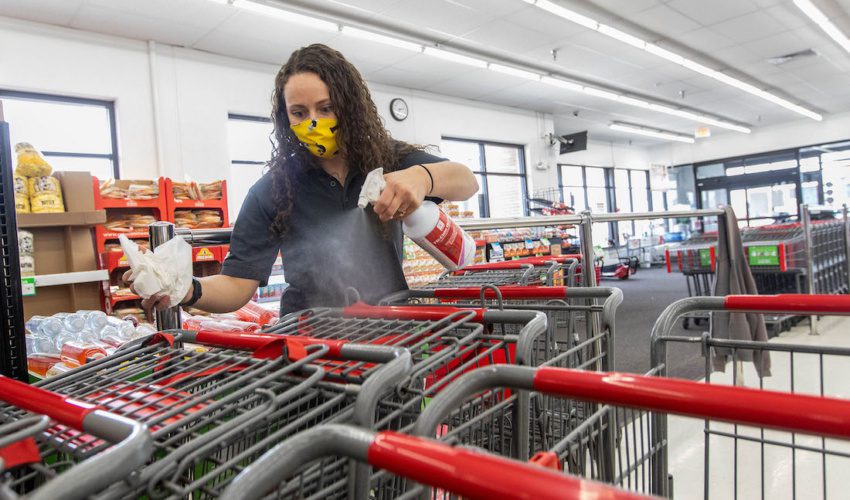Working through COVID: Workers share look at providing essential services
June 22, 2020
By John Hult, for SiouxFalls.Business
Sioux Falls businesses have largely reopened, but many never closed.
Essential workers in health care have received plenty of attention for their work directly battling the COVID-19 pandemic that has gripped the country since March, while workers in meatpacking plants like Smithfield in Sioux Falls have captured attention as their workplaces became transmission hot spots.
But the ranks of the essential include many whose work has continued both unabated and, in many cases, largely unnoticed.
Truckers delivering food to grocery stores and the employees who stock the shelves never stopped going to work.
Lawyers have continued to file protection orders, pursue lawsuits and represent incarcerated defendants.
Nonprofit leaders who provide food to the needy and the child care teachers who watch those who can’t stay at home have been busy as well.
No workplace has gone untouched by the pandemic, and each essential worker has been forced to adapt. We spoke to a handful of those essential workers to find out how things have changed.
Cari Buchanan
Occupation: Assistant manager
Employer: Fareway
Cari Buchanan shows up to work each day wearing an Iowa Hawkeyes mask sewn by her mother-in-law. Her husband, who manages the meat department at the same Sioux Falls Fareway at 41st Street and Sycamore Avenue, has a matching one.
“He’s the biggest Iowa Hawkeyes fan you’ll ever meet,” Buchanan said.
The couple have gotten used to the masks by now, just as they’ve gotten used to the shorter store hours and larger crowds at peak times, the plastic shields at the checkout counter, the influx of high school co-workers picking up extra hours just to get out of the house and the additional cart wipe-down duties everyone at the store now shares.
“It’s always been clean out here, but now it’s our No. 1 priority,” said Buchanan, who has been in Sioux Falls for the past four years. “At first, it was tough to manage, but we’ve gotten into a routine.”
Like many grocers, Fareway saw an influx of shoppers stocking up on staples and nonperishable items in March and April. Pasta and pasta sauce, boxed side dishes, soups, canned beans, and macaroni and cheese flew off the shelves. Yeast still disappears quickly too.
“Some people who maybe hadn’t been watching the news would come in and just be shocked,” Buchanan said. “You feel bad for them because they aren’t seeing what they need on the shelves.”
Toilet paper and sanitizer purchase limits have been in place for a while, but limits on other products have been more rare at Fareway, she said. When Hy-Vee first instituted purchase limits, Fareway saw a bump in business.
“The next morning, we were just slammed in the meat section,” she said.
Fareway doesn’t offer online ordering, delivery or pickup, which has simplified operations somewhat, but the store has been busy enough to keep employees on their toes.
Buchanan’s co-workers – around a dozen in the store at any given time – have taken it all in stride. Employees have been more willing to cover one another’s shifts, sick calls have dropped, and those who do experience COVID-like symptoms are given a week to rest as a precaution.
The designation as “essential” and subtle shifts in customer attitudes seem to have made a difference, Buchanan suspects.
“People actually appreciate us,” she said. “Sometimes, you’ll be working in the aisle and a customer will come up to you and say, ‘Thanks for being here.’ That feels really good. That didn’t happen before.”
Jeff Eschen
Occupation: Long-haul trucker
Employer: K&J Trucking
Most essential workers in Sioux Falls stay in Sioux Falls. Not Jeff Eschen.
Eschen’s round trips to Chicago or rides through various fulfillment centers and agricultural hubs in Minnesota have him running into a wide variety of pandemic-related state and local regulations, as well as dealing with ever-changing guidelines from businesses he serves.
He’s wearing a mask at every stop now, for example, and has grown accustomed to having his temperature checked upon arrival.
“Most places won’t even let you come in the building,” Eschen said. “It’s been quite an adjustment. It seems like every week, the shippers and receivers are changing things around. It can be frustrating because you don’t know what you’re walking into every week.”
Eschen understands that it’s necessary, but that hasn’t made it easy. Delivery times used to be locked in much more tightly than they are in today’s environment of ever-changing safety procedures, and Eschen sometimes waits hours for his turn to drop off his payload.
Waits can make a big difference in his workday too. He’s allowed 11 hours of driving per 14-hour shift. If the wait tips past three hours, it begins to cut into his allotted road time.
“By the time you get loaded in, you might only have seven and a half hours to drive instead of the nine or 10 you wanted,” he said.
Luckily, he said, he hasn’t experienced what a few of his fellow truckers have – a trip several hundred miles long that ends with the driver learning the destination has been shut down for cleaning and can’t take deliveries.
Sitting down for a meal in a restaurant is mostly out of the question just about everywhere, he said. His meals mostly come from drive-thrus these days, but that’s not always simple for a hungry customer whose vehicle doesn’t fit in the lane.
“At some of your drive-thrus, if you’re not in a vehicle, they won’t serve you. So that’s been a pain,” he said.
He has had fairly steady work, though there has been some slowdown in demand for grain deliveries during planting season. He started out this spring doing two or three round trips a week to Chicago but has cut down to one to help fellow drivers who still have a truck payment to make.
He’s spending more time at home now and sometimes brings his kids along on trips, just as the fourth-generation trucker’s father did for him. It’s a nice change from being stuck at home for the middle-schoolers, but those trips aren’t the same as they have been in the past.
“We take our steps to stay safe,” he said. “When I reach my destination, they stay in the truck.”
Eschen sees truckers as workers who are “risking their lives, as high a risk as anybody else out there.” He has always taken pride in his work, he said, but the current moment has brought his role into sharper focus.
“I grew up in this industry,” he said. “I’ve been all over the country, and I’ve never seen anything like this.”
Jennifer Stensaas
Occupation: Communications coordinator
Employer: Feeding South Dakota
Nothing is the same these days for Jennifer Stensaas.
That’s because nothing is the same for Feeding South Dakota – nothing but the mission, that is.
The nonprofit’s work to get food to the needy has been altered dramatically in the face of the pandemic, folding its food pantry, food bank and backpack programs into a single, no-contact, mobile food donation framework.
Volunteers fill and distribute emergency food boxes at the Expo Building at the W.H. Lyon Fairgrounds from 1 to 7 p.m. Tuesdays and Thursdays and fill trucks with the boxes for delivery across the state.
The switch came after the pantry shut down March 23.
“It just seemed like everything, overnight, switched over to emergency food distribution,” said Stensaas, who’s been with the nonprofit for 12 years. “I look back at that, and it was only a few months ago, and it felt like a whole different world.”
The fairgrounds building has become Feeding South Dakota’s home base, where Stensaas and her co-workers from the Westport Avenue and south campus locations show up each day.
Other things have changed too. The temperature checks for employees and volunteers that seemed “laughable” a few months ago are now standard. There also has been a slowdown in bulk food donations and higher costs for food the program purchases.
Feeding South Dakota used to lean heavily on a spring canned food drive that partnered with letter carriers, but the pandemic changed those plans as well. Right now, volunteer hours and cash donations are the best way to help, Stensaas said.
And the help is needed.
“The need (for food) has been so great, so fast. I hate this word, but it really has been unprecedented,” she said.
The hours have been long for employees and volunteers. It helps, she said, that her organization has been understanding, communicating frequently on health and safety, moving employees around to make sure tasks are completed and remaining cognizant of the stress levels the long hours can create.
Ultimately for Stensaas, the rewards are worth it.
“It feels like we’re running a little bit ragged, but we’re doing our best to stay healthy and take care of the people in need,” she said. “If we get sick and can’t work, who is going to do this work?”
Ashley Brost
Occupation: Attorney
Employer: Davenport Evans Lawyers
Ashley Brost hasn’t been to the office for a few months, but she’s still busy.
“Obviously, the court system doesn’t shut down,” Brost said. “People still need to show up for hearings, for those initial appearances (in criminal court) and bond hearings.”
Those hearings and appearances have changed since March, however. The federal U.S. District Court and Second Judicial Circuit, which covers Minnehaha and Lincoln counties, have each implemented protocol changes to deal with the threat posed by the COVID-19 pandemic. Those include restricting access to the courthouses for at-risk individuals or those exposed to the virus, encouraging attorneys to conduct business remotely and requiring masks.
“I’ve appeared for one hearing in person,” Brost said. “I still had to come to the courthouse to file a protection order for one client. Otherwise, I’ve done everything through Zoom or over the phone.”
On the criminal side, there’s an added element of fear from clients being sentenced to prison – fear of contracting COVID-19. Those fears also extend to clients she hasn’t heard from in years.
“I’ve had a lot of my former clients, those in prison, wanting to know if there’s anything I can do to get them out because they’re feeling vulnerable to the virus due to pre-existing conditions and the enclosed space,” she said.
The Coronavirus Aid, Relief and Economic Security (CARES) Act has provisions for the early release of prisoners, but the eligibility requirements are strict. None of Brost’s clients has qualified.
Another change: New clients don’t see her in person after an arrest. Instead of going to meet them in jail before a bond hearing, she now consults via video conference. It works under the circumstances, she said, but it’s less than ideal.
“You want a judge to see your client as a person, and part of how you’re able to do that is by getting to know them as a person through those face-to-face visits,” she said. “You’re losing some of that personal interaction.”
Video hearings on the civil side have been an adjustment as well, but they’ve also led to some unique, positive experiences. One family seeking to finalize the adoption of an adult child before her high school graduation to ensure her new last name appeared on her diploma was offered a Zoom link that allowed far-flung family members to attend.
“The court was really accommodating about it,” Brost said. “There were about a dozen people there from all over the country and even outside of the country.”
Maggie Rice and Kurtis Smith
Occupation: Transportation and food delivery
Employers: Contractors for Uber, Lyft, Instacart and others
When bars and restaurants began to close in March, the number of passengers hailing rides via Uber and Lyft plummeted.
Calls for food delivery via grocery services such as Instacart or for meal delivery through apps such as DoorDash, however, picked up dramatically.
At least at first.
“Those first few weeks with DoorDash were great, but then they hired a whole lot of drivers, and it changed pretty quickly,” said Maggie Rice, who had focused her efforts largely on Uber and Lyft in the months leading up to the pandemic.
The shift in demand – from riders to clients asking for personal shoppers and back again – has been a whirlwind for Rice, who suspects the new gig workers who emerged to meet the demand include many workers laid off as a result of the pandemic.
“It’s just been crazy,” Rice said. “It’s like ‘what side hustle are you going to pay the bills with this week?’ ”
Through April and early May, Rice would begin her days parked outside Costco, waiting for a call through Instacart. She’d then pick up a lunch delivery or two through DoorDash, perhaps shift back to groceries in the afternoon and then keep working meal deliveries at dinner.
As far as contracting the virus is concerned, Rice doesn’t lose sleep over it. She washes her hands between trips, keeps hand sanitizer in the vehicle and pays closer attention to cleanup.
“I don’t lick my hands,” Rice said. “I don’t worry about it much.”
Her Uber and Lyft rides have started to return now, and she hasn’t heard many concerns from her riders.
Kurtis Smith, who also does a wide variety of gig work behind the wheel, has had similar experiences and heard similar comments from the returning riders.
“I personally have not had a single passenger with Uber or Lyft express any concerns, and I haven’t had a single one wearing a mask,” Smith said in mid-May.
Smith has masks and sanitizer in his vehicle, however. He’s also a contractor for the Sioux Falls VA Medical Center, so his temperature is checked daily.
“I’m not worried about it at all,” Smith said.
Karen Benitez-Lopez
Occupation: Spanish immersion preschool teacher
Employer: EmBe
There’s a lot of dancing in Karen Benitez-Lopez’s life at the moment.
There always has been dancing in her Spanish immersion preschool classroom at EmBe’s downtown child care center, but the COVID-related rules that keep her students in the same room most of the day have made moving to the beat a more frequent form of release.
“Our outside time is really limited,” Benitez-Lopez said. “We’re having little dance parties here; we’re using the trampolines. They still run around a lot. The kids are adjusting.”
There are fewer children dancing, though. The classroom was near capacity at 18 children before a short closure in March, but only eight returned when the center reopened.
“We’re starting to see more kids, especially because of some of the safety measures we have in place,” she said.
Parents no longer visit the rooms. Children have their temperatures checked daily. They do go outside but no longer mix with students from other classrooms on the playground or at lunchtime. They still have physical education, but the instructor comes to the room. Walks and outings will resume soon but slowly, and outside visitors won’t show up for special presentations.
Even so, there have been some positives, she said.
“It’s been a little odd staying in the same room, and we do miss seeing the other kids,” she said. “But it’s also nice to spend more time one-on-one with the children. You feel like you get to know them better. The connections are stronger.”
Benitez-Lopez doesn’t see parents, but she has seen a shift in tone about the nature of her work and felt virtual gratitude she hadn’t before the pandemic.
“It’s nice to see that we are being appreciated, even if it’s just on social media,” she said. “These years are important in a kid’s life. We’ve always known that, but it’s great to see more people open their eyes to it.”

